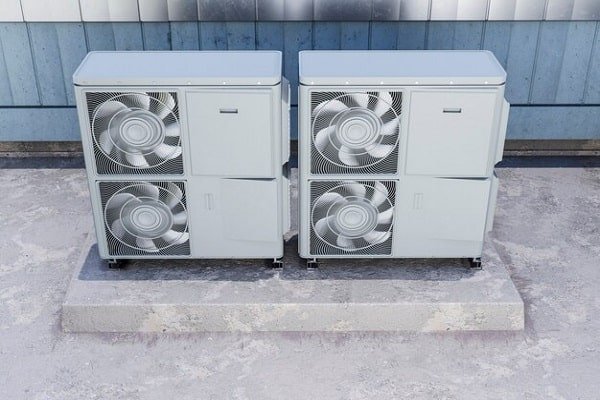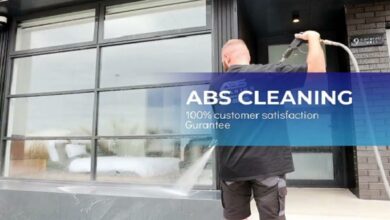The 5 Most Common Types of Commercial Air Conditioning

Do you want to build a new air conditioning system or update an existing one in your business? While you may be aware of certain typical elements of commercial air conditioning, such as their bigger size, it’s also vital to remember that many different commercial air conditioning units are on the market.
Understanding your building’s demands and specifics will help you choose what kind of system would work best for you, and this guide will give you the ideal starting point regarding commercial air conditioning.
What Exactly Is Commercial Air Conditioning?
Air conditioning is managing air in a specific location, such as a business building. It can be found in various facilities, such as offices, stores, or restaurants. Commercial air conditioning installation Perth helps businesses maintain a comfortable environment for customers and staff.
Choosing the right system for your business area is crucial to maximise performance and ensure the right temperature and humidity levels.
How Does Commercial AC Work?
Commercial air conditioning systems are sophisticated yet have the same basic components as commercial refrigeration. They cool air by eliminating heat by raising the temperature and pressure of the refrigerant, removing warm outside air and circulating it within.
The system heats the system using burner combustion gases, which then circulate the warmer, heated air throughout the business’s premises.
5 Types of Commercial AC Systems
There are common commercial air conditioning systems; each intended to satisfy unique cooling demands and requirements for commercial and industrial areas. Here are some common types of commercial AC:
Central Air Conditioning
Central air conditioning is a prevalent and widely utilised commercial air conditioning system in big buildings and businesses. It comprises a central cooling unit, usually positioned outside the structure, and a network of ducts that circulate chilled air throughout the inside. This system provides equal and steady cooling, perfect for multi-story buildings with many rooms and levels.
Central air conditioning systems are well-known for their energy economy, simplicity of temperature control, and capacity to manage heavy cooling loads, which makes them ideal for larger commercial areas.
Multi-Split Air Conditioner
Multi-split air conditioning systems are similar to ductless mini-splits, including a single outside unit linked to many indoor units. This arrangement enables the simultaneous cooling of many zones, providing more temperature control flexibility while reducing the number of exterior compressors required.
Multi-split systems are especially beneficial in commercial environments where duct construction is difficult or impossible since they provide an energy-efficient option for buildings with diverse cooling requirements.
Ductless, Mini-Split Air Conditioner
Ductless mini-split AC systems are a good choice for commercial buildings that do not have existing ducting. Indoor units in each room or zone are linked to outdoor compressors in these systems. They provide versatility in cooling particular regions by letting various zones have autonomous temperature control.
Moreover, ductless systems save energy by eliminating duct-related losses. They are also less difficult to install, which makes them suitable for retrofitting and commercial buildings with restricted construction alternatives.
Chillers
Industrial-grade chillers are often found in large commercial and industrial buildings. They chill water or other fluids and circulate them through coils to cool the structure’s air.
Chillers are powerful and capable of managing high cooling loads, making them ideal for chilling vast rooms and important applications such as data centres and manufacturing facilities.
While chillers need more complicated equipment and installation, they deliver extremely efficient and accurate cooling, maintaining constant indoor temperatures in high-traffic commercial settings.
VRF and VRV
VRF (variable refrigerant flow) is a great HVAC solution for medium to large applications, including hotels, offices, and retail establishments.
In VRF and VRV systems, heat pumps and heat recovery are employed. Heat pump systems can heat or cool a building anytime, making them ideal for open floor layouts. Heat recovery systems may provide heating and cooling to various locations simultaneously. This makes them an excellent alternative for a multi-room building.
Efficient commercial HVAC systems gather waste heat from the building to heat water and other locations to avoid commercial air conditioning repair. You may chill one area while heating another with the heat recovery system.
VRF costs around 15% more per square foot of conditioned space than typical commercial ducted AC.
Factors to Consider When Choosing a Type of Commercial AC
Choosing the best commercial air conditioning system for your company or building is an important choice that may affect comfort, energy efficiency, and total operating expenses. Here are some factors to think about before making this decision:
- Building Size and Layout: The kind of air conditioning system required is determined by the size and layout of your business space. Different systems are appropriate for environments ranging from tiny offices to enormous warehouses.
- Energy Efficiency: Choose energy-efficient technologies to save money in the long run. Look for Energy Star-certified units with excellent SEER (Seasonal Energy Efficiency Ratio) ratings.
- Climate and Location: The climate of your location influences system selection. Hot and humid areas may need different systems than cold and dry ones.
- Maintenance and Service. Consider the need for maintenance and the availability of service experts. Regular maintenance increases efficient and dependable performance.
- Ventilation needs: Determine the ventilation needs for indoor air quality. Ensure that local construction regulations and requirements are followed.
In Summary
Consider room size, environment, energy efficiency, and budget when selecting a commercial air conditioning system. Central air conditioning for big buildings is an option, as are ductless mini-splits for flexible zoning.
Chillers are appropriate for industrial establishments, while VRF systems provide adaptable heating and cooling. However, for the greatest fit, it is always preferable to speak with HVAC specialists.





